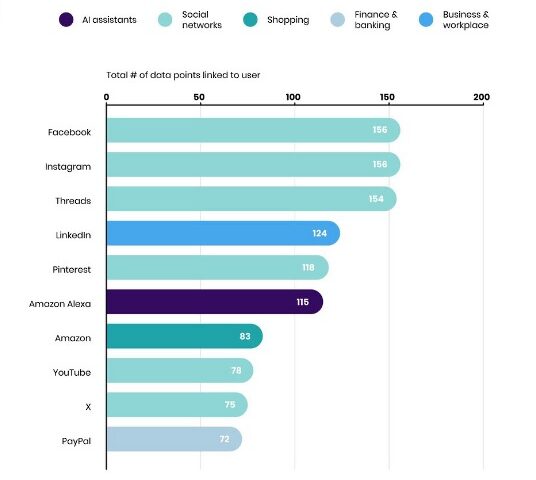The Stealthy Invasion of AI Worms
By: Javid Amin
In the ever-evolving landscape of the digital realm, artificial intelligence (AI) has permeated our lives in ways unimaginable just a few years ago. From streamlining mundane tasks to crafting personalized recommendations, AI has proven to be a versatile ally. However, amidst this digital utopia, a lurking threat emerges — the advent of AI worms, potential saboteurs capable of compromising the very fabric of our security and privacy.
This article embarks on a comprehensive journey into the unsettling reality of AI worms, dissecting their genesis, potential repercussions, and imperative strategies to counter this emerging menace.
The Genesis of Morris II: Unveiling a New Epoch of Malware
Recent research conducted by the collaborative efforts of Cornell University, Technion-Israel Institute of Technology, and Intuit has brought to light a formidable entity — “Morris II,” the first of its kind, a generative AI worm. This malware, an evolutionary descendant of the notorious Morris worm of 1988, possesses the ominous ability to pilfer sensitive data and autonomously propagate through diverse systems.
As we delve into the details of Morris II, it’s crucial to recognize its status as a potential game-changer in the realm of cybersecurity. Named after its infamous predecessor, this generative AI worm raises alarms due to its capacity to compromise AI-powered services, orchestrate spam campaigns, and, at its core, disrupt the seamless operation of AI-driven systems.
Understanding the Machinations: Morris II’s Infiltration Tactics
Morris II, in its essence, is a malevolent force targeting AI-powered email assistants. Employing a strategy known as adversarial self-replication, this worm inundates email systems with a cascade of strategically crafted messages. These messages, designed to confound AI models, trigger a chain reaction of repetitive email forwards, thereby inducing chaos within the AI, potentially leading to unauthorized data access and the dissemination of harmful content.
What sets Morris II apart are its dual-pronged infiltration methods:
- Text-Based Intrusion: Malicious prompts cleverly concealed within emails exploit vulnerabilities in the assistant’s security measures.
- Image-Based Gambit: Covert prompts embedded within seemingly innocuous images amplify the worm’s ability to spread, illustrating the sophistication of its tactics.
Morris II manipulates these deceptive techniques to infiltrate AI-powered email systems, using them as conduits for its nefarious objectives.
The Ripple Effect: Ramifications of AI Compromise
Once Morris II breaches the defenses of an AI assistant, the repercussions are profound. Beyond the immediate security risk of bypassing established protocols, it delves into the realms of severe privacy infringement.
By leveraging the capabilities of generative AI, Morris II extracts sensitive information from emails — names, contact details, financial data, and even social security numbers. The pilfered data, a goldmine for cybercriminals, becomes a potent tool for identity theft, financial fraud, and targeted phishing attacks.
Building Fortresses: Strategies for Navigating the AI Worm Threat
While real-world instances of AI worms remain speculative, proactive measures are imperative. Acknowledging the potential threat equips us to erect defenses against this unseen adversary. Here are pivotal steps to fortify our digital landscapes:
- Secure Design Principles: The genesis of AI systems demands meticulous attention to security. Developers must integrate robust security practices during the system’s inception, avoiding unwarranted reliance on AI models. Rigorous testing and vulnerability assessments become paramount to preemptively address potential weaknesses.
- Human-Centric Oversight: The intervention of human oversight in AI decision-making processes is critical. AI systems, particularly when dealing with sensitive data, should not operate autonomously. Mechanisms enforcing human oversight act as a bulwark against unauthorized activities and mitigate risks inherent in AI-powered systems.
- Continuous Surveillance: Instituting vigilant monitoring systems is indispensable. Robust monitoring detects anomalies within AI systems — patterns of unusual activity, repetitive prompts, or sudden surges in data access attempts. Identifying such anomalies prompts swift investigations and interventions to thwart potential attacks.
- User Empowerment through Education: Raising public awareness about the looming threat of AI worms is pivotal. Educating users on identifying suspicious emails, exercising caution with AI assistants, and promptly reporting concerns to relevant authorities fosters a vigilant and secure digital environment.
- Collaborative Vigilance: Open lines of communication and collaboration between researchers, developers, and security experts are paramount in the battle against AI worms. Sharing knowledge, identifying emerging threats, and devising collective preventive measures form a robust defense against these evolving cyber adversaries.
Navigating the Future: A Collaborative Crusade
The emergence of AI worms underscores the complexity of safeguarding digital ecosystems. Beyond immediate threats, it prompts a holistic approach to cybersecurity. A multi-faceted strategy involving technical innovations, standardized practices, and a shared commitment to ethical principles becomes the cornerstone of our defense against this dynamic threat.
As we peer into the future, the trajectory of AI worms unveils potential scenarios:
- Escalation in Sophistication: Future iterations of AI worms are likely to exhibit heightened sophistication. Advanced techniques, possibly incorporating natural language processing (NLP), may render them more adept at bypassing security measures and eluding detection.
- Weaponization by Malicious Actors: The specter of malicious actors, ranging from state-sponsored entities to cybercriminals, weaponizing AI worms looms large. Large-scale attacks, whether targeted campaigns against specific organizations or systemic disruptions across entire industries, become plausible.
- Cross-Functional AI Worms: Interconnected AI systems pave the way for cross-functional AI worms. These entities, exploiting vulnerabilities across various AI platforms, have the potential to cause widespread disruption, illustrating the need for a unified defense strategy.
The Way Forward: A Unified Front
Confronting the challenge of AI worms demands a synergistic approach. Key focus areas for navigating this evolving threat landscape include:
- Investment in AI Security Research: Sustained research and development endeavors directed towards AI security are imperative. Detection and mitigation methods, coupled with robust defense mechanisms, constitute vital areas for exploration.
- Standardization of Security Practices: The establishment of standardized security practices for AI system development and deployment is paramount. Clear guidelines and regulations ensure that security is a non-negotiable element throughout the entire AI lifecycle.
- Cultivating a Culture of AI Security Awareness: Instilling a culture of security awareness across stakeholders, from developers to end-users and policymakers, is indispensable. Knowledge sharing, reporting suspicious activities, and understanding individual roles in maintaining a secure digital environment are integral aspects.
Bottom-Line: The Ethical Imperative of Cybersecurity
The battle against AI worms extends beyond the technical realm into the ethical and social spheres. As we traverse uncharted territory in advanced AI, ethical considerations must parallel technological advancements. Prioritizing transparency in AI development, ensuring responsible AI use, and upholding fundamental principles of privacy and security are non-negotiable tenets in our quest to navigate the intricate landscape of AI worms.
Through sustained vigilance, collaborative action, and an unwavering commitment to ethical principles, we can mitigate the potential risks associated with AI worms. Together, we can shape a future where AI serves as a force for good, empowering individuals and societies while safeguarding their security and privacy. The stakes are high, and the path forward demands a united front against the unseen adversaries that dwell in the digital shadows.






